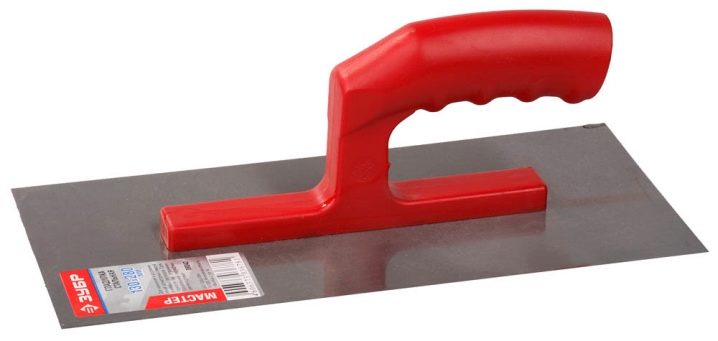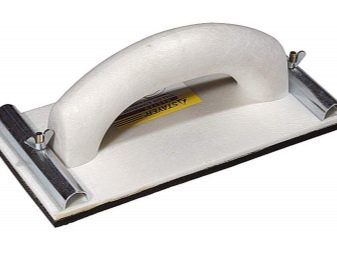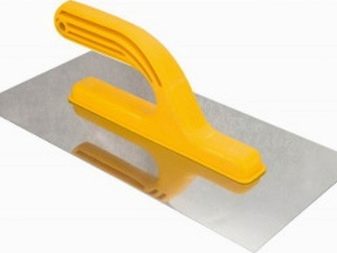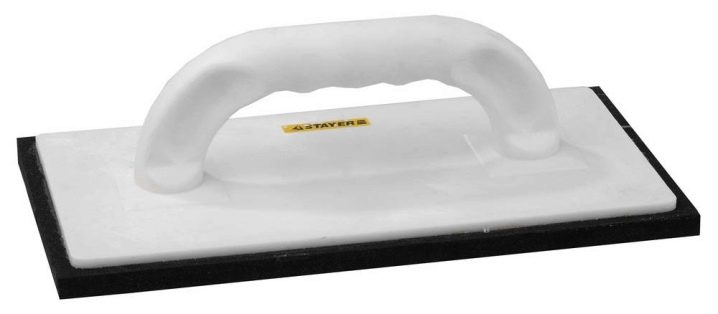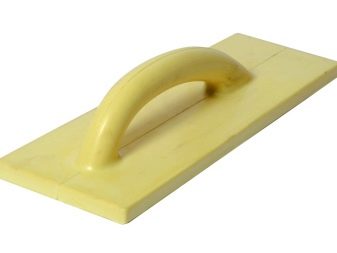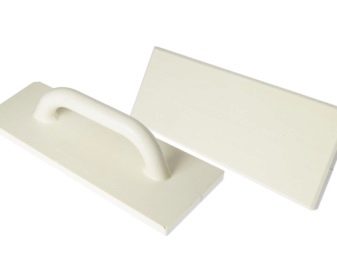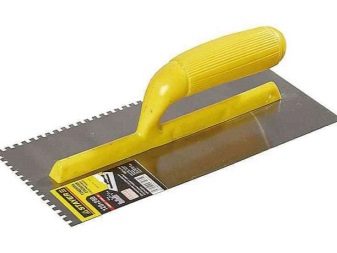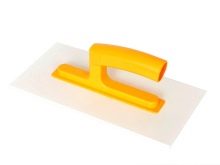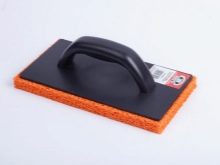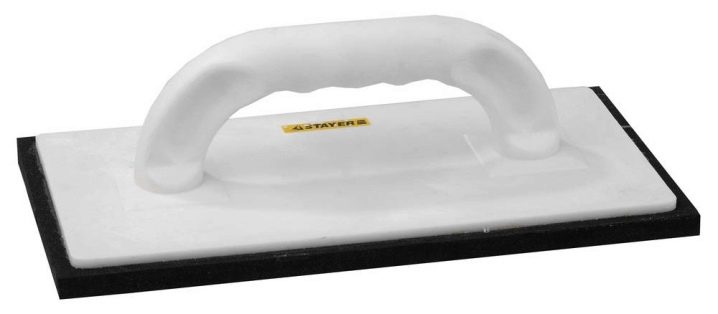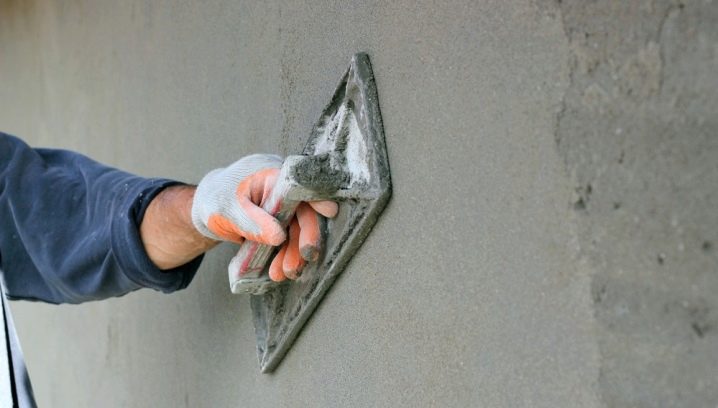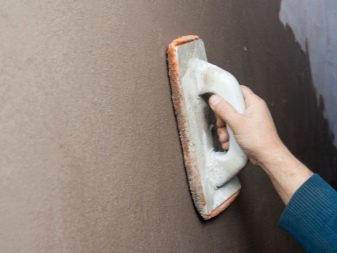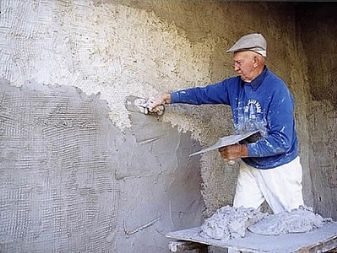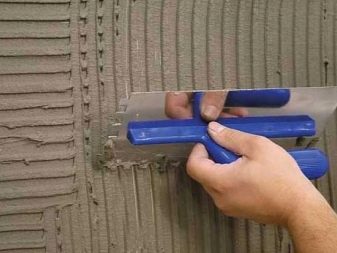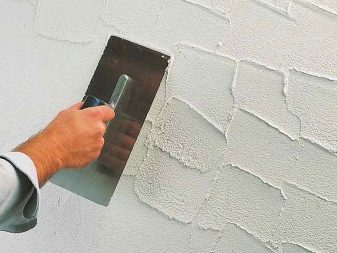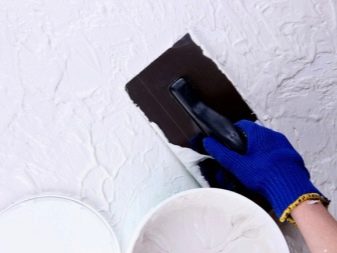Plaster trowel: types and uses

Plaster wall technology has a history of many thousands. The basic process and the tools used have not changed over the centuries, but have improved.
What is the poluterok?
One of the necessary tools in the construction and repair is the scraper. This article will help you figure out if you are new to repairs, what the tool is, what it is for, and how to use it properly and efficiently. In the article, even a professional will be able to find for himself useful techniques for working with the t-shirt. So, its main task as a tool is to apply a leveling mortar.
Types and application
The tool is used during the finishing works for the application, and more precisely, the uniform coating of the wall surface with mortar. A trowel is a plate about 10 mm thickIts standard dimensions are 60 cm in width and from 60 to 100 cm in length, with an attached handle in the middle of the tool. Its small size is due to the fact that it is used only for applying the mixture to small areas - such as the area around doors, windows or special architectural elements; it also performs the function of leveling the applied material in the corners.
Types of scam:
- Polyurethanewhich in practice is used more often than others. It is the most common material in the construction market because it is convenient to use. It looks like a plastic board, but when choosing it is important not to confuse these two materials.
- Wooden poluterok much stronger than many others, for example, foam and polyurethane. The disadvantage of this type is that the material may begin to adhere to its surface, that is, the poluterok will begin to “overgrow” with the mixture.
Due to the loss of the original shape, as a result, the corners may be not completely wiped.
- Foam plastic suitable for small processing areas. It is short-lived, but inexpensive.It should be clarified that it is enough for only a few strokes, later it may break or stick to the surface. The quality of the work done is also significantly affected. With all its inconvenience in use, however, it is found in building supermarkets.
- Metal The tool is used for the process of ironing the surface, it is suitable for those who plan to subsequently apply paint on the wall.
Requires special skills to use such a tool.
- Plastic, like metal, requires dexterity and is used in special cases for easy handling in small areas.
- Other materials - rubber, latex, sponge - also used to create a taster. Such tools are used to implement the final decoration, but not for basic works.
Obviously, it is better to give preference to the polyurethane tool: its use will save time and improve the quality of the application. In addition, problems with the tool stuck to the wall will be unlikely.
It is best to pick it up according to the size of your palm.
Using
First of all, it is necessary to determine the size of the area to be treated and not to procure too much of the mixture in advance, especially if it is from cement. The first is always the process of plaster. It begins with the fact that the mixture is applied in a circular motion counterclockwise. For applying the material to the surface, you need strength and skill, since the mixture, despite its thick consistency, is not entirely pliable and requires pressure for uniform application, and reusable and uniform actions will quickly tire an unprepared person.
The main task is to maintain the same pressing force., then the use of the grater will help, because its main purpose is the compaction of the applied solution. The application of the trowel begins after a 5-hour pause, which is necessary for the wall to dry. The technology of surface treatment with a taster is more similar to the plaster process described above, with only one addition: when applying the solution, you should not take your hand off the treated surface to create a smooth layer.
There are some nuances that need to be taken into account when working with the semi-merke, among them:
- It is important to take into account not only the quality of tools and equipment when performing work, but also to make a choice in favor of high-quality solutions for the mixture. It should be well mixed, be homogeneous, thick, without lumps. It is very important not to be mistaken with the amount of water, as well as the composition should include fine sand. An alternative to this labor-intensive process is the purchase of a ready-made solution.
- Methods of grouting plaster can be divided into two main ones: these are circular movements and movements to the pickup, that is, up and down. The first method is simpler.
- During the work with the tool, excess not quite dried solution can accumulate, they should be removed immediately, otherwise it can complicate the process and shorten the service life of the tool.
- Processing with a trowel is a long process, so there is a risk of the wall drying out until it is completely flattened, so the process should wet the walls from time to time, most often using a brush.
The technology of leveling surfaces does not require special expenses or expensive tools, so everyone is able to implement it.The only thing that is fundamentally important in this process is skill and physical strength.
To learn how to properly grind the plaster, you can learn from the video below.
